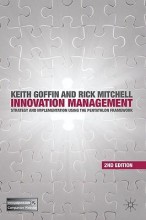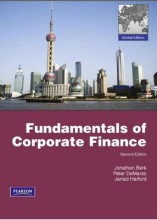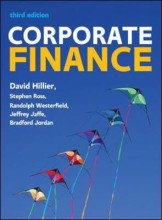Summary: Business Strategy Textbook | Van der weerdt
- This + 400k other summaries
- A unique study and practice tool
- Never study anything twice again
- Get the grades you hope for
- 100% sure, 100% understanding
Read the summary and the most important questions on Business Strategy Textbook | Van der weerdt
-
1 Defining Strategy
This is a preview. There are 29 more flashcards available for chapter 1
Show more cards here -
What is corporate-levels strategy?
- Refers to a strategy regarding a group of activities or business units
- Concerned with the answer to the question "what set of businesses should we be in"
- Scope and resource deployments are among the main components
- Should not only worry about the broad outlines of the strategies of the individual business units, but also how these should work together to create additional value -
What is business-level strategy?
- Level below corporate strategy, and thus inside the boundaries set by it
- The strategies of each individual business unit
- The strategy that focuses on how to compete in a particular industry or product-market segment. Distinctive competences and competitive advantage are the most important components at this level. -
How can plans and patterns be independent from each other?
A plan may go unrealised, while a pattern may appear without an explicit plan having been formulated. Intended strategy may lead to unrealised strategy or deliberate strategy, and deliberate strategy may lead to realised strategy, but so can emergent strategy (pattern) -
What are the 2 activities of strategic management?
1. Formulating strategy - what an organisation intends to be in the future and how it aims to get there
2. Implementing it - making sure that decisions are being implemented and checking whether they have the desired consequences -
What is the strategy formation process?
The means by which the strategy will be developed and achieved. It tries to answer how the actions of the firm link together or interact with each other as the strategy unfolds against what may be a changing environment. -
What is the strategy content?
The product of a strategy. States the main actions of the proposed strategy. -
What is the strategy context?
The environment in which the strategy is developed, in what type of business environment are the strategy process and content determined. e.g. is it a stable environment, etc. -
What are the 5 natures of strategy?
1. Intended strategy - formulating strategic plans, the original plan of the strategy
2. Deliberate strategy - when the intended strategy is executed without change
3. Realised strategy - the pattern of behaviours that a firm display, it is the final plan that is executed (intended + emergent strategy)
4. Unrealised strategy (the failed parts of the original plan or intended strategy)
5. Emergent strategy (spontaneous or unplanned parts of the plan -
Why does emergent strategy exist?
1. Unexpected opportunities may exist
2. Plans made in one part can be overlooked/ignored in other parts of the organisation
3. Employee creativity and autonomy can lead to unpredictable actions -
What are the 2 schools of thought about strategic management?
1. Prescriptive theories - suggest how things should be done, not how they are actually done. These theories can be put into practice, and centre around a key prescription of how to achieve success. Concern intended strategy.
2. Descriptive theories - tries to describe, explain and predict things, theory can be tested or falsified, centre around a key explanation for how strategy forms irl. Concerns realised strategy.
- Higher grades + faster learning
- Never study anything twice
- 100% sure, 100% understanding

































